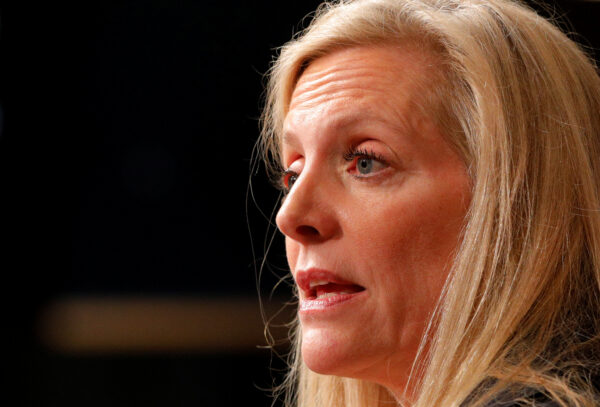Fed Has Taken Significant Action to Counteract Risks to Economy: Brainard
Federal Reserve Gov. Lael Brainard said Tuesday that three interest rate cuts so far this year have ..
Federal Reserve Gov. Lael Brainard said Tuesday that three interest rate cuts so far this year have put monetary policy in the right place until further notice, adding that Americas central bank should consider adjusting some of its monetary policy tools to cope with persistently low inflation.
“It will take time” for the full effects of the Feds rate cuts to move through the economy, Brainard said in a speech at the New York Association for Business Economics. “I will be watching the data carefully for signs of a material change to the outlook that could prompt me to reassess the appropriate path of policy.”
She said the Federal Open Market Committee (FOMC) had “taken significant action to provide insurance against the risks associated with trade conflict and weak foreign growth against a backdrop of muted inflation.”

Her remarks echo the content of recently released minutes from the Feds October meeting of the FOMC, in which the central bank cut interest rates and signaled a forward policy of wait-and-see.
“Most” of the Feds rate-setting officials saw the October cut in the federal funds rate as enough “to support the outlook of moderate growth, a strong labor market, and inflation near the Committees symmetric 2 percent objective,” according to FOMC meeting minutes, released last week.
The minutes indicated the Feds interest rate policy “likely would remain” where it is “as long as incoming information about the economy did not result in a material reassessment of the economic outlook.”
In her remarks Tuesday, Brainard said that while “the balance of risks remains to the downside,” she acknowledged that “there has been some improvement in risk sentiment in recent weeks.” She added that “the baseline is for continued moderate expansion, a strong labor market, and inflation moving gradually to our symmetric 2 percent objective.”
She added the Fed had “made a very significant adjustment” in easing monetary policy this year and that the Feds moves had helped achieve its aims.
“We are seeing some of that start to take root,” she said, pointing to strong numbers in employment, consumer sentiment, and housing.
“Recent data provide some reassurance that consumer spending continues to expand at a healthy pace despite some slowing in retail sales. Consumer sentiment remains solid, and the employment picture is positive. Housing seems to have turned a corner and is poised for growth following several weak quarters,” Brainard said.
Opportunistic Reflation
In one of the most explicit endorsements yet of changes in the Feds monetary policy framework, Brainard said the central bank should move from a strict 2 percent inflation target to a broad, “flexible” promise that inflation would average that level over time.
“I prefer a more flexible approach that would anchor inflation expectations at 2 percent by achieving inflation outcomes that average 2 percent over time or over the cycle.”
This approach, which the Fed appears to have begun to pave the way for by indicating its inflation target is a “symmetric 2 percent objective” rather than a ceiling, would allow higher inflation if for a period of time it had remained below target.
For example, after sustained periods when inflation has been below 2 percent, Brainards idea would see the Fed change its target to a similar level above 2 percent, and tell the public that inflation would run higher for about the same amount of time.
“Flexible inflation averaging could bring some of the benefits of a formal average inflation targeting rule, but it would be simpler to communicate,” Brainard said. “By committing to achieve inflation outcomes that average 2 percent over time, the Committee would make clear in advance that it would accommodate rather than offset modest upward pressures to inflation in what could be described as a process of opportunistic reflation.”
Her concept is less strict than some of the other proposals being floated as part of the Feds current review of monetary policy.
The review, launched earlier this year, was begun as a broad debate over ways to better ensure the inflation target is hit and maintained.
In recent comments, however, Fed Vice Chair Richard Clarida, who is overseeing the review, has said the central banks existing framework is adaptable enough to meet the central banks inflation goals.
Well-Positioned Monetary Policy
Brainards remarks regarding monetary policy being in the right place echo those made by Fed Chair Jerome Powell a day earlier.
Monetary policy is “well-positioned” to support the strong labor market, Read More – Source
